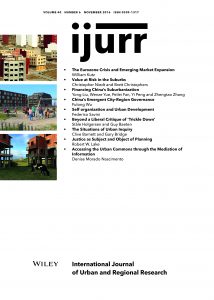China’s rapid urbanization has resulted in substantial suburbanization over recent decades. However, limited research has been conducted into how land-based capital is mobilized, accumulated and circulated within the circuits of the capital accumulation process, or how land-based capital is used to finance massive investment in suburbanization by China’s local governments, especially since the trend in land commodification during the 2000s. We examined the capital switching experience in the city of Hangzhou and our findings indicate that local governments have attempted to simultaneously strengthen housing development and industrial growth. In contrast to experiences of suburbanization in Western countries, a real estate boom during the early days of suburbanization in Hangzhou was not necessarily the result of diversion of excess capital from over-accumulated investments in the manufacturing industry. Rather, it was a consequence of capital accumulation facilitated by land-reserve systems and land-based financing of infrastructure orchestrated by local government. Local governments and their affiliated land-reserve centers and local investment platforms have acted as entrepreneurs by using profits from suburban property development to subsidize industrial investments and fund the infrastructure-supported expansion of outer suburbs. These findings highlight the potential risks of land-centered accumulation and provide important reflections upon the theory of David Harvey in the context of urban China.
Details
Written by:
Yong Liu, Wenze Yue, Peilei Fan, Yi Peng, Zhengtao Zhang
Digital Object Identifier (DOI)
10.1111/1468-2427.12454
About DOI

